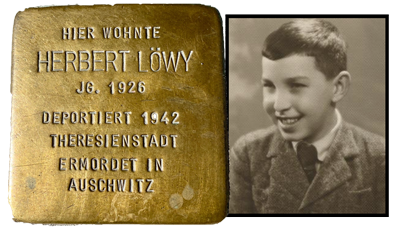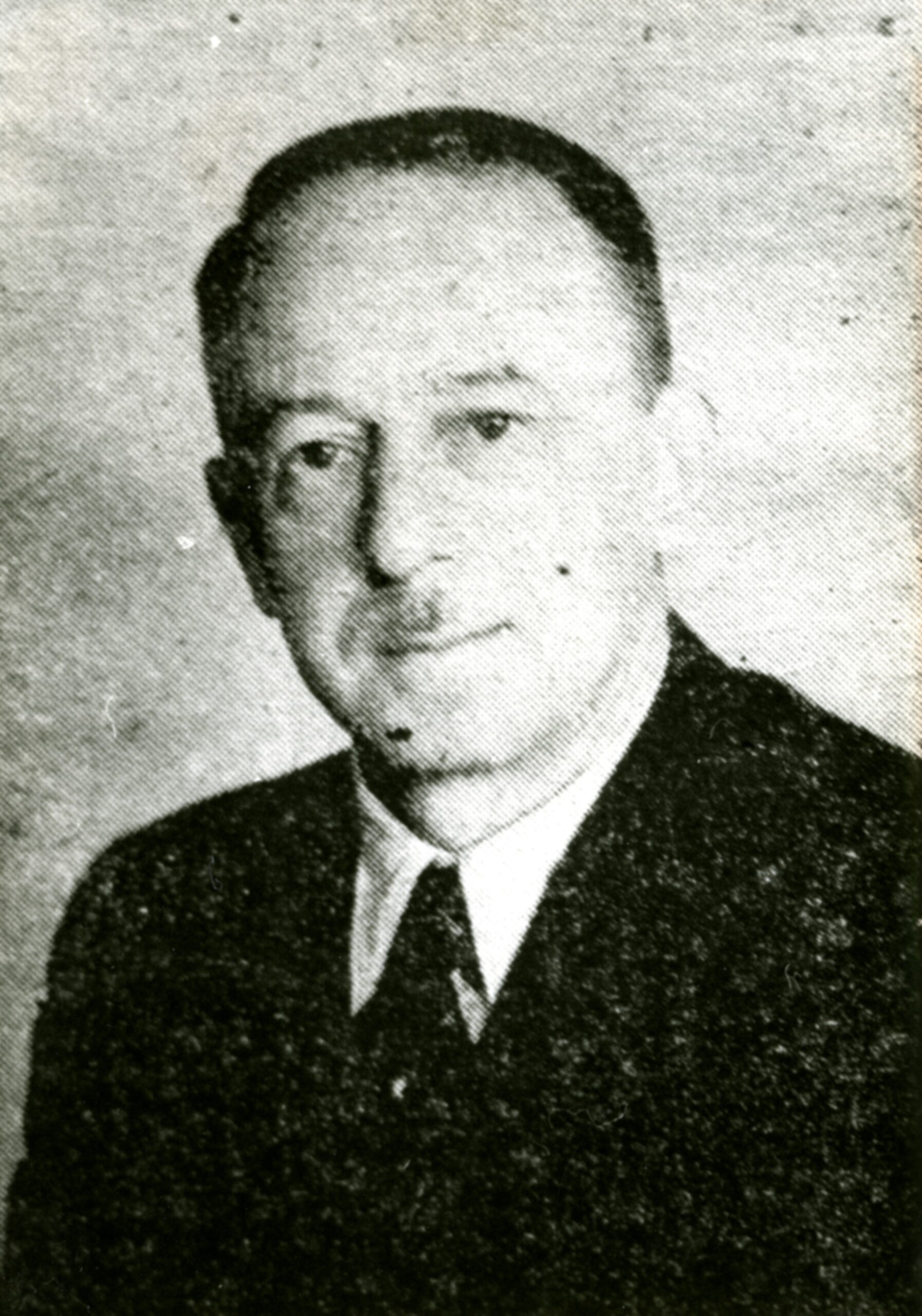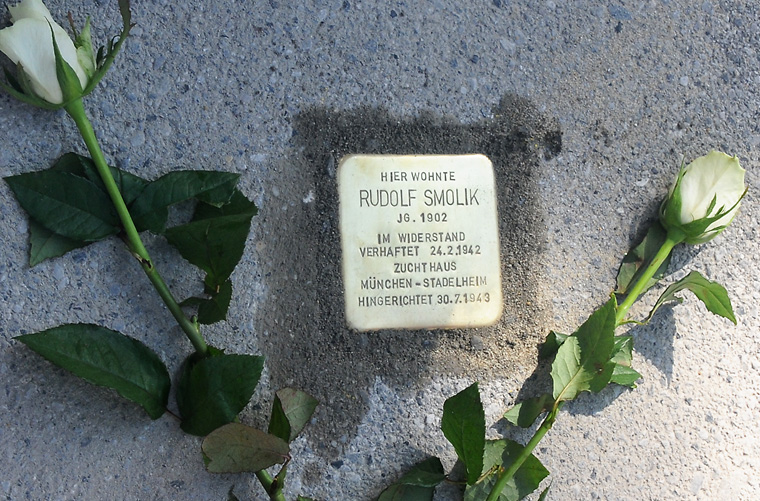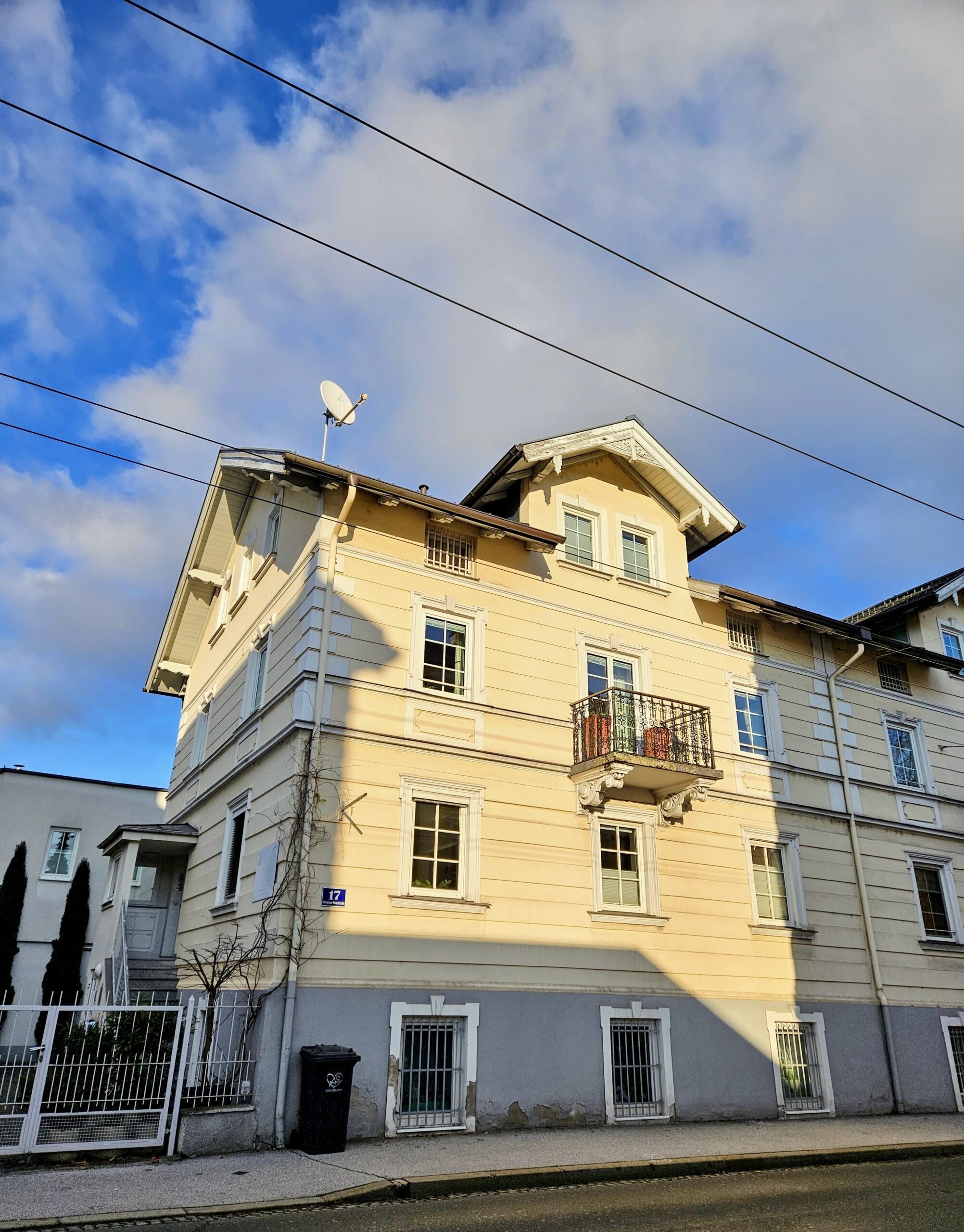Rudolf SMOLIK, born on April 14, 1902 in Thomasroith, district of Vöcklabruck in Upper Austria, was Catholic, married and a radio technician by profession.
He had lived in Salzburg since 1922. His son Kurt was born here in 1929. The family had lived in the Maxglan district of Salzburg since the year of violence in 1938.
SMOLIK, who was considered an opponent of the Nazi regime and the war, had been a member of the illegal Communist Party of Austria (KPÖ) since the beginning of the war year in 1940 and had been head of the KPÖ local group Maxglan since November 1940.
Its activities were limited to recruiting members, collecting membership dues and supporting comrades and families in need: »Red Aid«.
At the beginning of the war year 1942, the Gestapo succeeded in rounding up and smashing all socialist and communist resistance groups in Salzburg by infiltrating the Gestapo informer Josef Kirschner, who also lived in the Maxglan district.
Rudolf SMOLIK was arrested by the Gestapo on February 24, 1942, sentenced to death on March 3, 1943 by the »People’s Court« (1st Senate presided over by Paul Lämmle in the jury courtroom of the Salzburg Regional Court) for »preparation for high treason« and »favoring the enemy«, and beheaded at the age of 41 on July 30, 1943 in Munich-Stadelheim.
Fourteen members of the communist local group Maxglan were each sentenced to several years in prison and most of them were assigned to the punishment units »999«1.
Franz HAGER, who was sentenced to twelve years in prison, died on the »Eastern Front« in January 1945. Josef RIEDHERR and Johann BRUCKMOSER died after their liberation as a result of their imprisonment.
Rudolf SMOLIKS widowed wife remarried. His son Kurt emigrated to Switzerland in 1947.
On the initiative of the Salzburg Provincial Association of Austrian Concentration Campers, Prisoners and Politically Persecuted Persons, the executed resistance fighters Heinrich AUER, Karl SCHALLMOSER, Anton SCHUBERT and Rudolf SMOLIK were exhumed at the Forest Cemetery in Munich-Perlach and buried in a ceremony on December 14, 1952 at the Communal Cemetery in Salzburg – with the participation of the priest Franz Dürnberger from Gnigl.
It is documented, however, that the bodies of the executed resistance fighters Heinrich AUER, Karl SCHALLMOSER, Anton SCHUBERT and Rudolf SMOLIK were handed over to the Würzburg Anatomy for study purposes, and therefore could not be exhumed at the Forest Cemetery in Munich-Perlach. (Arolsen Archives)
1 Strafeinheiten »999« of the German Wehrmacht commonly referred to as »Strafbataillon 999«, but consisting of some 28. 000 forced recruits, among them many Nazi opponents who had been sentenced to penal servitude and loss of civil rights; prisoners who were considered »unworthy of military service« (WU) were declared »worthy of military service« for the duration of the war and sent directly from the penal system to »front-line probation« in the »999« punishment units, deployed in North Africa, Greece, the Balkans or on the »Eastern Front«; several deserted, for example the railroad worker Johann BRUCKMOSER from Maxglan, who joined the Greek partisans in 1944, was captured by the British Army, returned home at the end of 1946, fell seriously ill and died in Salzburg at the age of 42.
Sources
- Salzburg City and Provincial Archives
- People’s Court (7 J 231/42)
- Gestapo final report KPÖ Maxglan (20.04.1942)
- Resistance and Persecution in Salzburg 1934-1945, vol. 1, Vienna 1991, pp. 366ff, p. 615
- SSalzburger Tagblatt, 29.07.1946, p. 4: Obituary 3rd anniversary of death
Translation: Stan Nadel
Stumbling Stone
Laid 06.07.2011 at Salzburg, Maxglaner Hauptstraße 17




